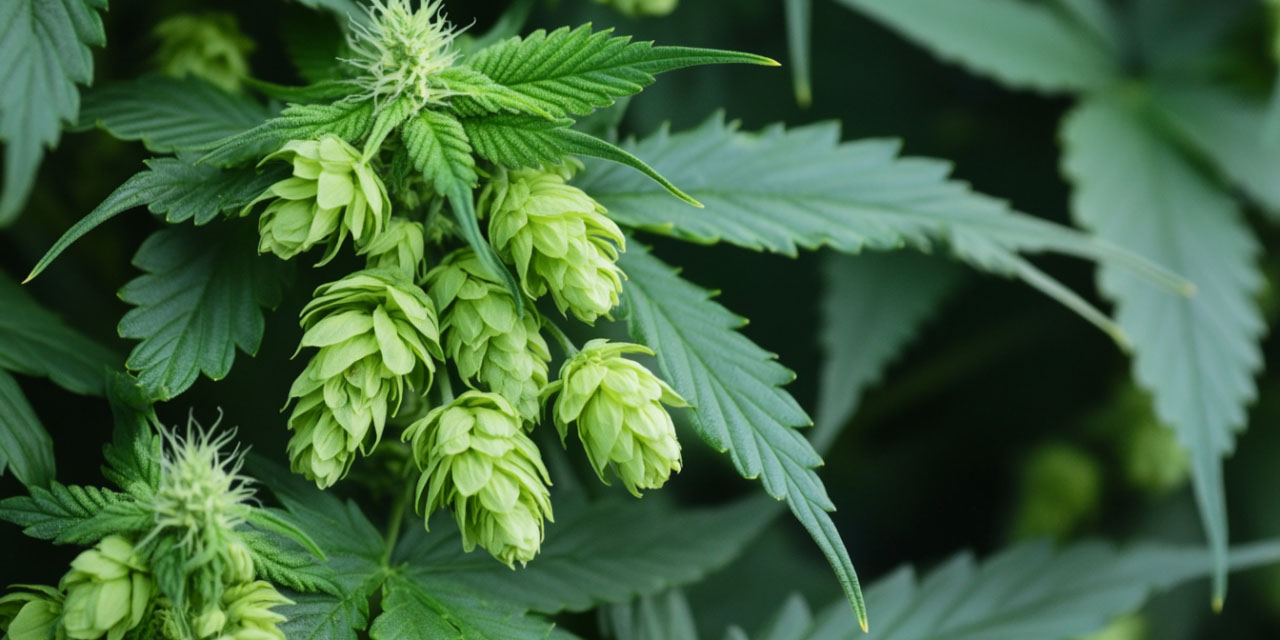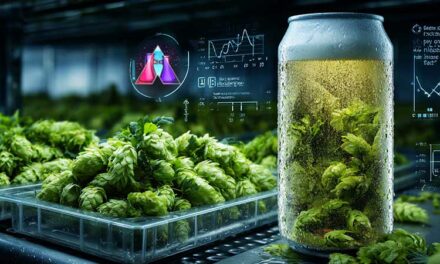Brewing with Cannabis sativa vs. Humulus lupulus: A Comparative Review
The recent legalization of cannabis in several regions has sparked interest in its application across various industries, including brewing. In their comprehensive review, Alejandra Ramírez and Juan M. Viveros delve into the similarities and differences between Humulus lupulus (hops) and Cannabis sativa (hemp and marijuana) in beer production. While hops have been a cornerstone of brewing for centuries, cannabis presents both opportunities and challenges in creating innovative beer products. This article explores the botanical relationship, chemical composition, flavor contributions, production techniques, and regulatory landscape of these two plants in the context of brewing.
Botanical Relationship and Chemical Composition
Both Humulus lupulus and Cannabis sativa belong to the Cannabaceae family, sharing structural and chemical similarities. They are dioecious plants, meaning male and female flowers grow on separate plants, but only the female flowers are used in brewing.
Hops (Humulus lupulus): The brewing value of hops lies in their lupulin glands, which produce alpha acids (α-acids) and essential oils. The α-acids, when isomerized during boiling, contribute to the beer’s bitterness and microbiological stability. Essential oils, on the other hand, impart aromatic qualities ranging from floral and citrus to herbal and spicy notes.
Cannabis (Cannabis sativa): Cannabis contains over 120 cannabinoids, including the well-known Δ9-tetrahydrocannabinol (Δ9-THC) and cannabidiol (CBD). While THC is psychoactive, CBD is not and is often prized for its potential therapeutic properties. Both cannabinoids interact with the human endocannabinoid system, influencing mood, appetite, and inflammation.
Despite their shared terpenoid compounds like myrcene, linalool, and β-caryophyllene, only cannabis contains cannabinoids, while hops provide bitterness through α-acids.
Flavor and Aroma Contributions
The flavor profiles imparted by hops and cannabis are distinct but complementary.
- Hops: Known for imparting bitterness, hops also provide floral, fruity, and spicy aromas. Bittering hops are rich in α-acids, while aroma hops are prized for their high essential oil content.
- Cannabis: Terpenes in cannabis, such as myrcene and limonene, contribute to earthy, citrusy, and resinous aromas. Hemp beers often use hemp seeds or hemp oil, which lack significant levels of cannabinoids but add nutty and earthy flavors. In contrast, cannabis-infused beers focus on the inclusion of THC or CBD oils for both flavor and functional effects.
The combination of hops and cannabis terpenes can create a broader flavor spectrum, enhancing beer complexity and appeal.
Psychoactive and Functional Properties
One of the most significant differences between hops and cannabis is their psychoactive potential.
Hops: Contribute only to the sensory and preservation aspects of beer without psychoactive effects.
Cannabis:
- THC: Psychoactive, producing euphoria, altered perception, and relaxation.
- CBD: Non-psychoactive, associated with calming, anti-inflammatory, and anxiolytic properties.
In commercial cannabis beers, THC is typically only included in non-alcoholic brews due to legal restrictions prohibiting the combination of alcohol and psychoactive compounds.
Production Techniques and Challenges
Brewing with cannabis introduces technical and regulatory challenges.
Hops Brewing: The bitterness from hops results from the isomerization of α-acids during boiling. Hops are added at different stages of the brewing process for bitterness, aroma, and dry hopping.
Cannabis Brewing: Cannabinoids, being hydrophobic, are difficult to integrate into water-based solutions like beer. Technologies such as nano-emulsification, encapsulation, and biopolymer nanoparticles are used to ensure cannabinoid stability and bioavailability.
Two primary types of cannabis beers have emerged:
- Hemp Beer: Brewed using hemp seeds or oils, contributing flavor without psychoactive effects.
- Cannabis-Infused Beer: Typically non-alcoholic, infused with either THC or CBD oil.
Bioavailability and Consumer Experience
The bioavailability of cannabinoids in beer is another challenge. THC Bioavailability: Oral bioavailability is low (~6%), with slower onset and weaker effects compared to inhalation. CBD Bioavailability: Oral absorption ranges from 13% to 19%, with variability depending on individual metabolism and food interactions.
As a result, cannabinoid-infused beers may require higher doses to achieve the desired effects, which is complicated by legal dosage restrictions.
Market Trends and Regulatory Landscape
The global cannabis beverage market is poised for significant growth, with projections reaching $2 billion by 2026. However, the regulatory environment remains complex. THC-Infused Beers: Legal only in regions where recreational cannabis is permitted. Must remain non-alcoholic. CBD-Infused Beers: More widely accepted, but face FDA restrictions in some countries. Hemp Beers: Generally legal globally, as they lack psychoactive THC.
Key players in the industry, such as CERIA Brewing and Two Roots Brewing, are pioneering innovative cannabis beer products.
Conclusions
While Cannabis sativa introduces exciting possibilities for beer innovation, it cannot fully replace hops due to the absence of isomerizable α-acids necessary for bitterness. However, the addition of cannabinoids and terpenes offers new opportunities for flavor, functionality, and consumer appeal.
The continued growth of cannabis legalization, coupled with advancements in brewing technologies, suggests a promising future for cannabis-infused beers. Brewers who navigate regulatory hurdles and leverage emerging technologies will be well-positioned to capitalize on this evolving market.
Future Outlook
The intersection of cannabis and brewing represents a frontier for both craft brewers and large-scale producers. With ongoing research and regulatory clarity, cannabis-infused beers are set to become a significant category in the global beverage industry.
Source
Ramírez, A., & Viveros, J. M. (2021). Brewing with Cannabis sativa vs. Humulus lupulus: A review. Journal of the Institute of Brewing.










Recent Comments